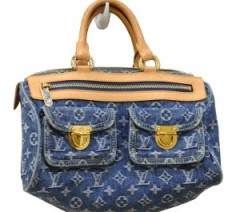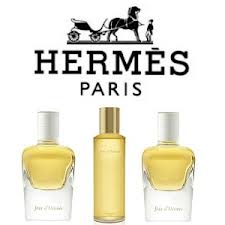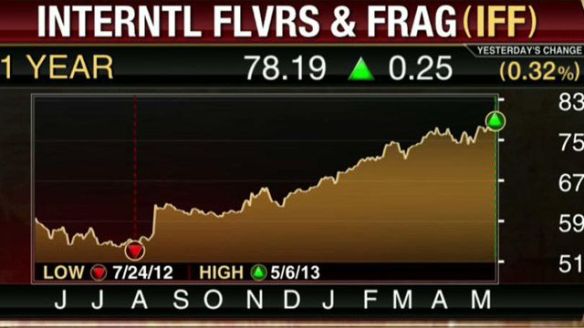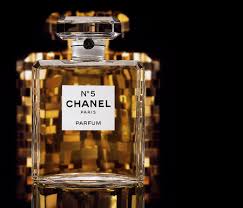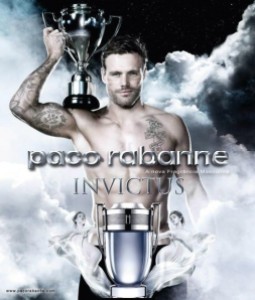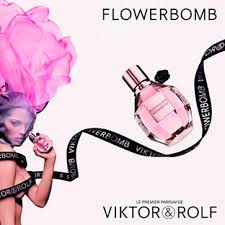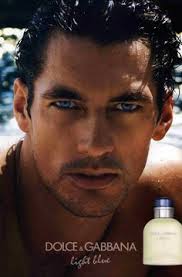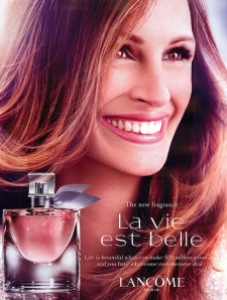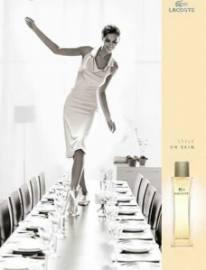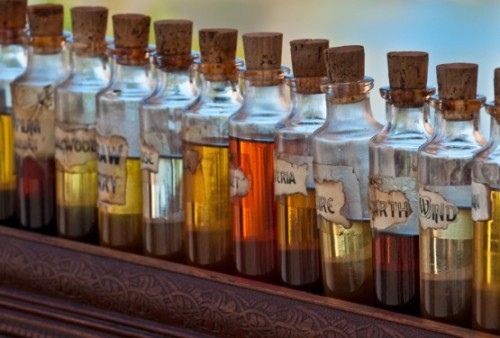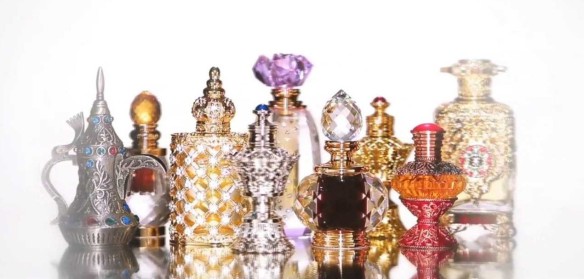I wanted to take a look at the Asian fragrance markets, and to specifically highlight the cultural attitudes towards perfumery in China and Japan. The former is undergoing some small changes in perception, at least amongst Chinese men, but scent still isn’t particularly important as a general matter across the population as a whole. As you will see, even attempts to sell an Axe-like body spray took a lot of effort (and a rather controversial spokesman) to succeed.
I will also look at Japan’s cultural mindset regarding perfumery. It seems to be a rather conflicted one, without any genuine love for fragrance, which is perhaps why they have traditionally had a very weak market. What surprised me there was something completely different: the significance of scented fabric softeners. I should warn you that this post is going to be a little long, so feel free to skip to whatever part interests you the most.
[UPDATE: If you’re interested solely in China, I’ve written an article focused purely on its fragrance culture, its fragrance history, & also the role of oud (沉香) in both the past and present.]
As always, I would like to stress that I have no background in finance, economics, marketing, sociology, or anything remotely mathematical in nature. I do not claim to be an expert on any of those things, there are limits to how comprehensive I can be in a single article, and I write about what interests me, as well as what I have access to. If you are more interested in another country, you can always check my prior pieces on the U.S. and international fragrance markets, the late 2013 U.S. industry figures and popular fragrances, the global fragrance market, the Brazilian fragrance market, and the celebrity perfume industry. Please note that almost all of the articles focus on the commercial, mainstream end of things, not the niche sector.
THE OVERALL ASIAN FRAGRANCE MARKET:
Premium Beauty News has a May 26, 2014 article that briefly summarizes the state of various Asian markets, including South Korea, Indonesia, Vietnam, and India. It relies on a report by the highly respected research analysts, Mintel, but it gives only cursory conclusions. Frankly, it’s not easy for me to obtain updated, annual figures for countries like China and Japan beyond what I’ve discussed from Euromonitor reports in my earlier 2013 piece, so I found it quite fortuitous to stumble across even these nutshell assessments.
The article states:
With the exception of Japan, where fragrance sales have declined over the last five years, the Asian fragrance marketplace is also growing at fast pace, even if it remains small relative to the Western markets. China recorded a CAGR [Compound Annual Growth Rate] of 9% over the last five years, India 25%, Indonesia 44%,Vietnam 15% and South Korea 12%.
As the likelihood for a more tailored approach towards individual cultures increases, domestic and international players will need to tailor products accordingly:
- India has a strong cultural connection with fragrance as scented deodorants and body sprays are the most important products in the country.
- In contrast, China is only slowly opening up to Western fragrance standards and the concept of perfume is relatively new to its consumers, who choose their fragrance to refer to Western lifestyles and special occasions.
- South Korea is another example where the beauty industry is thriving but fragrance is not yet part of people’s daily grooming routine. However, fragrances are turning up in growing numbers in department and speciality stores.
In countries like India, China and Vietnam where the middle class is growing rapidly and with it the popularity of aspirational Western lifestyles, it is now a question of when and how pushing fragrance as part of daily life will begin as it is key to growing the fragrance market. [All emphasis is by PBN in the original.]
As for the other countries discussed, I was fascinated to see Indonesia leading the group with 44% growth. With regard to India, my global report piece shows that the deodorants and body sprays are indeed a massive part of their market thus far, thanks to the driving role of teenage boys. (One shudders to think of how much Axe they must purchase!) In terms of actual and proper fragrances, Indian men far outnumber women in purchases.
CHINA:
A) THE OVERALL NUMBERS & SALES FIGURES:
I’ve talked about the Chinese market in the past, relying on an April 2013 Euromonitor report on the Chinese fragrance market. To recapitulate some of the more pertinent quotes:
- Given the value sales of RMB4.6 billion in 2012, fragrances in China remained a relatively small category; around one 18th of skin care in value terms. […] As a whole, product penetration is quite low in even top-tier markets, and fragrances are just seen as unnecessary products by most consumers. No remarkable changes have been seen in consumers’ acceptance of fragrances – the Chinese account for 20% of the world’s population, but only contribute 1% to value sales of fragrances. The average Chinese person is not used to wearing perfume, unless they are extremely particular about their image, usually those who work for international companies or as high-ranking executives. [Emphasis added by me.]
- Despite the large number of brands present in the market, fragrances in China continued to be dominated by international companies in 2012 in value terms. Chanel accounted for a 12% share of value sales in fragrances, followed by Parfums Christian Dior with 8%. Calvin Klein Cosmetics, Hugo Boss and L’Oréal China were in third, fourth and fifth place respectively. These world-famous companies have established high brand awareness amongst Chinese consumers, as they have in international markets, mainly thanks to continued investment in advertisements on television and in fashion magazines. [Emphasis in bolding added by me.]
So, bottom line, most Chinese consumers do not see perfume as a necessary product, and the main reason why seems to be that the country does not have a history with perfumery. How could it, given its political, ideological past? As a 2012 Mintel report on the country’s perfume practices explains:
“Prior to the 1980s, it was very uncommon to see any ownership or usage of fragrance in China and it was only in the early 1990s that fragrance started to become commonly owned and used. Over the last 20 years, the Chinese fragrance market has risen from practically nothing to a sizeable, though still underdeveloped category. US and UK, per capita spending on fragrance is estimated at US$10 and US$33 respectively, while per capita spend in China is only around US$0.5 (Mintel, 2011). Applying fragrance is still not considered to be a necessity for Chinese consumers, however it is slowly being integrated into the grooming routine.” [Emphasis added by me.]
B) CHANGES IN PERCEPTION:
I discovered something very interesting from the same company, outlining a slow shift in perceptions by men. The report is not new, but dates back to 2011 and 2012, and talks about the growth in the men’s market in China, their changing attitudes that fragrance is not only for women, and the slow growth of what they label as “prestige” perfumes. (Generally, those fragrances seem to fall in the $60-$80 range, roughly speaking, when discussed in America where the term “premium” is also used.)
This particular 2012 Mintel report quotes the company’s China Research Analyst, Lui Meng Chow, on men’s changing perceptions regarding perfumery, the psychological reasons why, the role of television, and the overall result of the shift:
“The word perfume often has feminine overtones among male consumers, however, thanks to the popularity of Japanese and Korean TV dramas, fashions from these countries are shaping Chinese men’s perceptions of personal grooming. As a result of this trend, younger male consumers are shifting away from their conservative traditions and have been impressed with concepts which promote individual expression. This has caused manufacturers to launch male-specific brands, including toiletries, despite the fact that they were previously associated with being a woman’s product.”
“Now this trend is extending into prestige and luxury brands and products, from aftershave to eau de toilette. Most Chinese males tend to enter the beauty-care category in the middle to high-end product category, buying into those products with credible quality, thus they are willing to spend more in their first experience of grooming products.” Lui Meng Chow continues.
Overall, the fragrance market in China grew 32% in value from RMB 3.2 billion in 2008 to RMB 4.2 billion in 2011. According to Mintel’s research, the majority of urban consumers in China use fragrance to become more attractive and well-groomed (60%) or stylish (53%). And as retail channels have developed rapidly, the outlets where Chinese consumers can purchase fragrance have diversified. Today, nearly half (46%) of Chinese consumers say they purchase perfumes and fragrances from a specialist perfume shop, 37% buy at a department store and a similar number (35%) say they purchase online. Meanwhile, 31% claim to purchase fragrances from supermarkets and hypermarkets.
People say a lot of things in response to surveys. It’s not always the truth but, rather, how they like to present themselves. I bring this up because I find some of those survey response numbers — (46%) of Chinese consumers say they purchase perfumes and fragrances from a specialist perfume shop — a little astonishing in light of a 2012 Ad Age article. It talks about Unilever’s problem in introducing their Chinese version of Axe (called Lynx over there) into the market, and how they had to resort to a star with a rather scandalous past (by Chinese standards) in order to gain men’s attention.
The article is a really fascinating insight into both the Chinese culture regarding scented products and how far some companies have to go in order to make inroads in the market. It reads, in part, as follows:
Unilever had a conundrum when it came to the Chinese launch of Lynx, the body spray known in the U.S. as Axe. The problem wasn’t persuading Chinese guys to select Lynx over a competitor but to choose it at all in a country where men have never been expected to smell good.
“Guys are open to grooming, but fragrance is not part of the repertoire at the moment,” said Jon McCarthy, regional brand director for Axe/Lynx in Asia. “The marketing challenge for us is to integrate our product into guys’ routines, to [help them] see the benefits of a confidence boost and to feel more attractive.”
The brand achieved that and more, becoming No. 1 in the market. And it did so using a celebrity pitchman with a past so scandalous that his Lynx ads can’t even be seen on Chinese on TV.
C) PERFUME AS SOCIAL IDENTITY:
In the West, many perfume users see fragrance as self-expression or as signature that is part of their identity. That is obviously not yet the case in China, where it wasn’t easy to sell even a scented body spray like Axe. When perfume is purchased, it is more about belonging to an elite luxury group, with all the social cache that accompanies such membership. Mintel’s China expert breaks down the figures:
Mintel’s research also reveals that 80% of urban Chinese consumers claim to wear a fragrance that reflects their personal style, 78% claim that wearing a fragrance helps them stand out more at social or formal gatherings and 45% always look for the latest release of perfumes so as to stay ahead of the trend. However, its not all about personal image. Some 39% of fragrance users still use fragrance with the more functional purpose of eliminating body odour, and 42% of respondents own or wear fragrance because they received it as a gift.
“Fragrance is regarded as a luxury item, especially if it is internationally branded. Acquiring it means buying into an identity, and also expresses an emotional sense of belonging to a luxury or stylish group identity which serves as a status symbol. Following the implementation of the 1980s Open Door policy, western culture and style have significantly influenced consumer developmental trends in China, with foreign investment also having a major impact on the Chinese economy and income in these regions. All these have resulted in demand for and spending in luxury products including fragrances, toiletries and make-up amongst the affluent and emerging middle income Chinese.” Lui Meng concludes.
80% of respondents may have claimed that they wore fragrance as a reflection of their personal style, but the remainder of Lui Meng’s analysis and what I’ve noted from other sources would seem to present a very different picture. In any event, the overall bottom line seems to be that perfume is either aspirational, or a symbol of having socially arrived — not an actual habit borne out of love, longstanding habit, or any real appreciation for how a particular fragrance may smell.
JAPAN:
A) THE OVERALL NUMBERS & SALES FIGURES:
As the Premium Beauty News article mentioned at the start of this piece makes clear, the Japanese market is very weak. It stands out amongst the other Asian nations in having actually declining sales over the last 5 years. One reason why is the recession, while another is the continued impact of the natural disaster which hit Japan.
Still, Japan has never had a particularly robust fragrance industry. A Companies and Markets report from late 2013 has some specific numbers:
- Although Japan has the second biggest market for beauty and personal care, and carries one of the most developed and mature cosmetics markets around the world, Japan’s fragrances is still in its infancy, totalling mere a ¥42 billion in 2012.
- The Japanese fragrances sector is fragmented. […] ‘Various distributors’ accounted for 24% value share in 2012, with the leading distributor, Bluebell Japan, leading the field. [¶] Bluebell Japan has been operating in Japanese fragrances since 1954 and the company distributes 25 international fragrance brands, including Bvlgari and Gucci. [Emphasis added by me.]
- The Japanese fragrance industry has been forecast to increase at an average annual rate of 1.4% during 2007-2017, picking up pace after two years of decline in 2009 and 2011 due to economic recession and natural disaster.
B) FRAGRANCE AS A WESTERN SYMBOL & JAPAN’S CULTURAL SPLIT:
What I find to be interesting about the Japanese market is the underlying sociological and psychological approaches to perfumery. Now, I am no psychologist, I have not looked for any expert analysis on the Japanese psyche when it comes to perfumery, and I also have not sought any sociological reports on the same. Frankly, if such reports exist, they would be in a language I do not read or know. A few, admittedly old, Japanese newspaper reports in English have stated that there isn’t a lot of detailed information on the country’s specific usage of perfumery.
However, there is an absolutely fascinating, detailed discussion of the Japanese habits, mentality and mindset regarding fragrances by The Black Narcissus, a perfume blogger who has lived in Japan for over 17 years. He makes it clear that he is neither an anthropologist nor an expert, and that he can offer only his perceptions, the individual opinion of one man. While it may not be a scientific overview of a whole nation’s culture, it’s a lot more than we have from other sources, and I thought it was brilliant.
The Black Narcissus’ post is entitled Japan, Perfume. Though it is long, I urge you to read it in full because it is truly fascinating. It talks about his personal experiences in trying to buy perfume in places that sell expensive fragrances in Tokyo, and the detached sterility of the whole process. He explains why he thinks there is such a plethora of vintage treasures to be found in antique shops. More importantly, he talks about how perfume is either an aspirational product or something that is bought because it confers membership in an elite socio-economic class. Frankly, his analysis echoes everything said by Mintel’s China Expert up above with regard to the approach and mentality of the majority of Chinese consumers.
To quote just a small part of The Black Narcissus’ analysis:
As I have written elsewhere, this country, essentially, is not a perfume country, if by perfume country you mean somewhere, like the Arab countries, or France, Italy, Spain, places where a bottle of scent is sold somewhere every few seconds or so and is seen as something enjoyable, natural, a part of one’s public, and private, identity. Something to be enjoyed. Splashed on, used up, and bought again when you run out, with abandon. A bottle to be drained. This is emphatically not how it is seen in Japan. There are no perfume shops, the ‘profumeria’, like there are on practically every street corner in Rome or Barcelona: just a limited selection sold in particularly designated department stores. And even these are not frequented with anyway near as much enthusiasm as the clothes floors, accessories, and particularly make up concessions like Kanebo and Shiseido (Japanese women do love their skin care). Perfume, here, is very much an afterthought. […][¶]
.. [O]n the whole, the wearing of perfume, in this country, is simply not something commonplace or even ‘natural’. It is sold; it is worn; there are customers milling about the perfume stands at the department stores as you would expect, but even here there are crucial distinctions between the pleasurable act of perfume shopping in Berlin or Los Angeles and the museum-like, hygienic perfection of the testing out a high-end scent at at top level deparment store such as Isetan, Shinjuku – the busiest, biggest, and most gleaming fashion emporium in all of Tokyo. […][¶]
Ultimately, like non-Japanese or gaijin (the derogatory-tinged word that is applied to all foreigners, white ones in particular), perfume, of the expensive, western variety, is seen, I think as The Other. And The Other is basically something you don’t (want to) understand, you fear, or conversely have an untoward level of respect, even deference, for, but, for me, the fact remains that ‘the other’ is a huge and integral part of the general Japanese psyche, and I would personally place perfume within its unloving, distancing, and paranoid frame. […][¶]
… [C]oncurrently – and this brings, us finally, to Chanel, and Guerlain – a strange combination of hierarchy and snobbery (the desire to purchase expensive, branded foreign goods; the fierce, ubiquitous impulse to have the latest fashion – Japan is fad/craze/boom central par excellence -the seemingly almost genetic impulse to copy and follow other people so as not to stand out, plus the very deeply entrenched inferiority complex […] all of it creating, in the package of stylish, expensive, and particularly French, designer perfume, a very potent and covetable status symbol. […][¶]
… that perfume, in that box, baby, is there to be admired.
I OWN you, you fancy, little, French imported, Kokyu (‘high level’) objet.
And though it is possible that I may, one day, open you, to wear, perhaps, to the opera, or a classical concert, a play, or an afternoon tea party in Ginza with some of my old friends, you know, on second thought, I think that I probably won’t.
Who knows how strong this concentrated perfume will actually be?
What if in some way I were to offend others?
What if the foreign smell makes me stand out too much, and look ridiculous? No, no. I don’t think I will wear you actually. I’ll put you just in this drawer, here by the bedside. Fourth drawer down. There you go…. […][¶]
You know why all those glorious perfumed treasures were there, waiting for me, in that old, locked up glass cabinet? Because nobody, basically, wanted them. For the vast majority of the people here they would be nothing but a signifier, something that the majority of this perfume-hating nation basically never wants to understand, because, in end, wearing perfume is a foreign custom – it is not Japanese.
It is fascinating, isn’t it? The Black Narcissus makes a point that one definitely does smell perfume in Japan: from young kids with their “trashy, pink and blue perfumes;” the young mothers with their de rigueur uniform of L’Occitane‘s L’Eau des Quatres Reines; the glitzy, middle-aged women who will occasionally rock Poison, Coco, or Dune; or the men on the prowl wearing what they think of as lady-killer scents (Aramis or Platinum Egoïste, according to The Black Narcissus). Yet, the bottom line is that these all appear to be exceptions to the general rule, and were noticed simply because they stood out.
The Black Narcissus goes out of his way to state he is not trying to provide any anthropological or sociological expert conclusions, but I think the economic numbers from research groups like Mintel and the Euromonitor support a lot of his conclusions. The Japanese may buy perfume, but they don’t buy a lot of it — and the vast majority of them have a mental approach to the product that is about something other than how it actually smells. For them, it’s not about an olfactory escape into other lands or times; it’s not about a love for amber or floral aldehydes; and it’s certainly not about perfume as self-expression. It’s about a symbol of Western luxury that amplifies their aspirations, or about class identity amongst the group. It is a mere object.
Japan’s tricky, complicated relationship with scent is underscored in another Westerner’s account of the situation. A 2009 piece called Scents and Sensibility: Perfume in Japan by Sylvia Saracino for GaijinPot reads, in part, as follows:
What’s the biggest pot hole just waiting to receive a foreigner’s foot? His or her artificial fragrance of choice. While perfume overdoses are rightly taboo in most cultures, even a tiny whiff of store bought scent could be deemed inappropriate in a Japanese workplace.
[¶] Consider some unfortunate cases: “One day, after a pretty great lesson, my head English teacher approached me. Assuming that she’d heard about the students’ participation, I asked for her opinion and was met with this awkward silence. With what looked like a great deal of difficulty, she finally said, ‘Your perfume is very strong! The children can smell it.’” Despite the temporary embarrassment, Leela concedes that it was better to have been informed of her inadvertent transgression early on. “I got the message and, clearly, wanted to die,” she continues, “but the woman insisted on clarifying that the only ladies in this country who wear perfume are either ‘very important’ or ‘working at night’.” [Emphasis added by me.]
There seems to be a generational divide in Japan, based on the accounts in that piece. There is a story of about an older teacher who wore no perfume or frippery of any kind, and it is placed in sharp contrast to the account of Emiko, a young Japanese woman. Her tale:
“I studied abroad in Europe as a teenager,” explains Emiko, a young mother in Akasaka. “I love perfume! On the subway one day, I was wearing some and an old man yelled, ‘You stink!’” Momentarily miffed, Emi, then in her early twenties, took it upon herself to teach the heckler a lesson: “I got up out of my seat, went over and sat down right beside him!” In the end, personal style will always be a matter of choice.
How can fragrance companies do well in Japan when faced with such a complicated cultural and mental mindsets towards fragrance? Companies like Kilian and Estée Lauder’s Tom Ford are specifically making fragrances designed to appeal to the Asian market, whether in name, softness, style, or notes. For example, Tom Ford’s Atelier d’Orient Collection or Kilian’s Flower of Immortality. I have no idea how well they’ve done, as companies don’t release sales figures for specific products, let alone profitability statements for specific markets. I’m sure some luxury-loving Japanese people have purchased them, but I have to wonder how many.
C) PERFUME SUBSTITUTES & THE LOVE OF DOWNY:
What I do know is that there is one olfactory genre that seems to be very successful in piercing the Asian market — and it’s not actual perfume. It is household fragrance and cleaning products! The Asahi Shinbun is a very well-established, influential Japanese paper, and it wrote an article entitled Fragrance to the Forefront in May 2013 which talks a lot about… Downy fabric softener. In fact, the newspaper article made the thoroughly disturbing, depressing suggestion that “consumers increasingly regard scented fabric softener as a replacement for perfume.” [Emphasis added by me.]
It gets worse. According to the Asahi Shinbun, Japanese consumers are experimenting with combining various fabric softeners to create their own signature scent. One company even has a “Make Your Own Happiness” center to facilitate mixing and matching its products. No, I’m not joking.

Lenor’s “Make Your Own Happiness” center where you can mix and match various scented fabric softeners. Source: carpediemjapancom.blogspot.com
The rest of article explains just how successful household items have become as a substitute for perfumery:
With their sense of mild body odor, Japanese generally frown at the idea of splashing themselves with strong fragrances.
In recent years, however, scented fabric softeners have taken off in a big way.
The surge in sales suggests that consumers increasingly regard scented fabric softener as a replacement for perfume; some are even blending softeners to come up their own original scents.
The product that triggered the trend was Downy, which is manufactured by Proctor & Gamble (P&G).
Sales of household products that leave a pleasant fragrance or freshness on clothing after washing began to soar at foreign-affiliated supermarkets and other outlets from around the mid-2000s,
In 2008, P&G released Lenor Happiness, a softener touted as having a strong fragrance. Since then, the market has been inundated with fabric softeners that are sweeter, more intense and have longer-lasting aromas. […][¶]
Among fabric softeners offered by [another Japanese household cleaning company called] Lion, products emphasizing aroma saw sales in 2012 close to three times greater than those of 2005. Japan’s overall market for softeners grew from 62.6 billion yen ($644 million) in 2008 to 78.7 billion yen in 2012 according to market researcher Intage Inc.
Indoor air fresheners, insect repellents, cleaning products, kitchen detergents and other housecleaning items are also highlighting scent.
Under the concept of “Fragrant Housework” last year, Kao Corp., a major player in the Japanese consumer products market, pitched the idea of homemakers actually enjoying housework with the use of soothing fragrances. It started releasing rose-scented cleaners and other fragrant household products.
“Cleaning and washing is tedious. However, soothing fragrances can help motive people,” said brand manager Junji Shiratsuchi, 49.

TV commercial for Kao, a japanese brand of fabric softener, called “Haunted hay”. Source: YouTube.com
In an attempt to explain the situation, the newspaper turned to a Japanese scholar who has written about fragrance in the past. And he came up with a rather unexpected explanation for the whole thing:
Shigeru Kashima, a scholar of French literature who translated Alain Corbin’s “The Foul and the Fragrant,” noted there are instances in other countries of people preferring scent-free environments after a period of concealing offensive odors with fragrant smells.
Yet, he said the time eventually comes when people feel a need to start using fragrances as a means to stand out.
Still, why do people in Japan prefer scented fabric softener over perfume?
Kashima, trying to come to grips with the idea, came up with the following notion: “Japanese men seek immaturity and childishness in women rather than sexiness associated with maturity. As such, people probably prefer the cleanliness emphasized by fabric softener over the sexiness linked to perfume.” [Emphasis added by me.]
There are no words to express my astonishment. To put it politely, it seems clear that the chap is struggling to come up with any sort of possible explanation, and is making quite a stretch. If he is correct (which I’m dubious about), then his assessment seems to say more about gender-roles and gender perceptions in Japan than anything else.
What I can say is that none of this seems to indicate a widespread, actual love of perfumery amongst the Japanese. The cultural state of mind is simply not there. Fragrances may be purchased for a variety of non-olfactory reasons, but there is no genuine historical, cultural and philosophical appreciation for them. (That appreciation seems to be reserved for cleanliness, and the household items which provide it.) Without such a foundational structure, I wonder how the industry can ever really grow to strong, vibrant levels, especially in the immediate future.
ALL IN ALL:
This has been a long piece, and I want to thank you for any parts of it that you may have read. The problem in discussing any of this is that mere economic numbers are dry, while anecdotal evidence is hardly indicative of any larger trends. One must therefore combine the two together to get even a faint semblance of what may be happening within a particular country.
It’s hard not to contrast the situation in China and Japan with that of Brazil whose massive perfume market is the biggest in the world. It wasn’t always that way, but the country has an incredibly strong perfume culture and you can see the result. In the case of the two Asian countries, one can really only speculate about the larger or cultural reasons for why perfume hasn’t taken off as a modern trend. China with its booming economy and its vast population is particularly hard to categorize with any blanket statement other than the fact that its history prevented a longstanding, widespread tradition of perfumery from taking root.
As for the future, it may require a team of experts — sociologists, historians, economists, and psychologists — in each country to do a detailed study of the various socio-economic groups, their generational differences, and their attitudes to scent in order to really understand whether fragrance has a chance of taking a firm hold in their psyche. I’m talking about an actual love of perfumery, not mere purchases. In my opinion, a genuine appreciation for scent is necessary to drive a truly strong market. If it happens, I think it will take a generation, or perhaps two. The seeds are there — even maybe in Japan — but it’s going to take time.
What might help are celebrity fragrances. They capture the attention of the youth demographic which can be a very significant force in driving overall sales, as evidenced by the U.K, and America, and in creating perfume awareness as a whole. Even in India, it is the young who are demonstrating the greatest interest in perfumed creations, though it is mainly centered on hygiene products for now.
One thing is certain, though: the Japanese really love their scented fabric softeners.




























